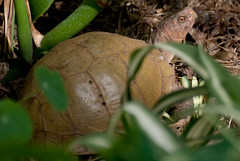My ponder was more about whether I felt up to reclaiming another chunk of my Traditional Landscaping for turning into veggies. (Recall that I had reclaimed an 8' x 4' area of Traditional Landscaping earlier in the summer. While the post was done in mid-August, some of the seeds were started in June and the garden was planted in July.)
To answer the question of my friend who was surprised by the idea of winter vegetable gardening, yes! you can plant in September and October. Appropriate vegetables include beets, carrots, garlic, green onions, lettuce, radish, turnips, peas, spinach, and just about every vegetable in the cabbage family (cabbage, broccoli, cauliflower, arugula, kale, collards, mustard greens, rutabaga, kohlrabi, broccoli rabe, bok choy, Chinese cabbage, and more). (Actually, those radishes and turnips are in the cabbage family, too.)
Most of the veggies listed really hate hot weather and will either turn to a crisp or bolt to seed and become bitter, tough, or otherwise inedible. Yet, at some point, the weather is likely to turn too cold to support growth or even so cold as to freeze your crops to the ground. But many of these veggies either don't care that their tops got frost bitten (carrots, beets, turnips, radishes, ...) or actually taste better after a good frost (kale).
Lettuce is "tender" in a couple of ways. It will freeze and turn to mush if it gets too cold. But it will also "sunburn" (turn dry, crisp, and brittle) if left in the hot summer sun. You can prevent the "sunburn" by using shade cloth, but it will still be inclined to rush into seed production in the hot weather. This makes it a good crop to start in the early spring -- for harvest before the heat of summer -- or in the fall -- for harvest before it freezes to mush.
Spinach (and some of the other greens) are also likely to bolt to seed in the heat, but they are more resilient when it comes to the cooler weather of the fall and early winter.
As for me, I still haven't decided whether to reclaim more Traditional Landscaping, but I have decided that I can and will start at least a small winter garden. The row of cucumbers that is growing up the side of the garage is definitely starting to age and I'm starting to tire of dealing with vast quantities of cucumbers. Later this month I'll pull out the cucumbers and put in a row of Sugar Snap Peas to climb the trellis and a row spinach in front of them at their feet.
In the meanwhile, I'll keep looking around the yard for a likely location for more veggies (without actually tearing out the whole back lawn because that would be WAY too much work).










How could one be a gardener in CA and not know about winter vegetables? I don't even grow vegetables and I know about them! :-) I love fresh veggies--just not the work involved. Would much rather buy a hank of spinach than do the work of growing it. In theory, I am all for growing as much of one's food as possible. In practice--one can fit only so much into one's week.
ReplyDeleteWell, the person in question is quite new to the gardening scene, especially the gardening in CA scene. She's originally from Hong Kong, grew up in the city, went to University in IL (where it's frozen solid all winter), and has spent her life immersed in technology (and paying the mow-n-blow guys to deal with the yard).
ReplyDeleteSo, I cut her slack and teach her about gardening as we go.
Her new home is out in the east hills and she's thinking about vegetable gardening... with deer. Now we get to teach her about fencing to keep deer (and bunnies) out of the vegetable garden.